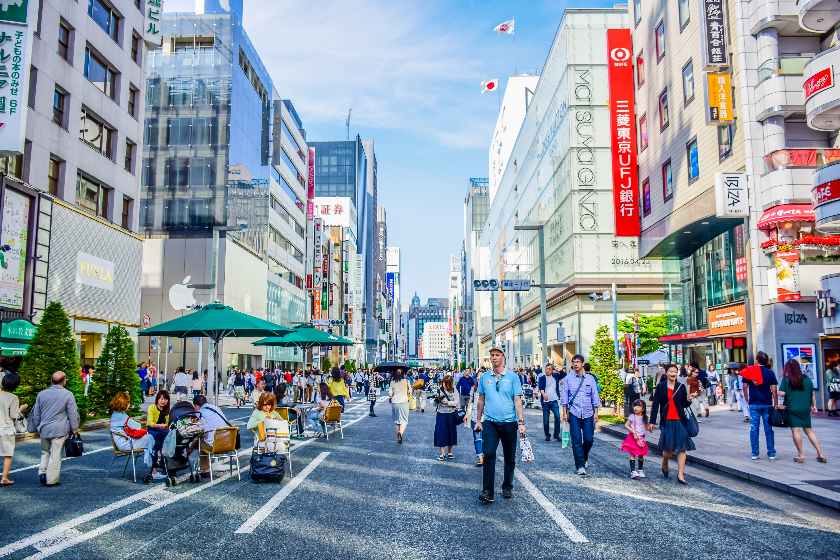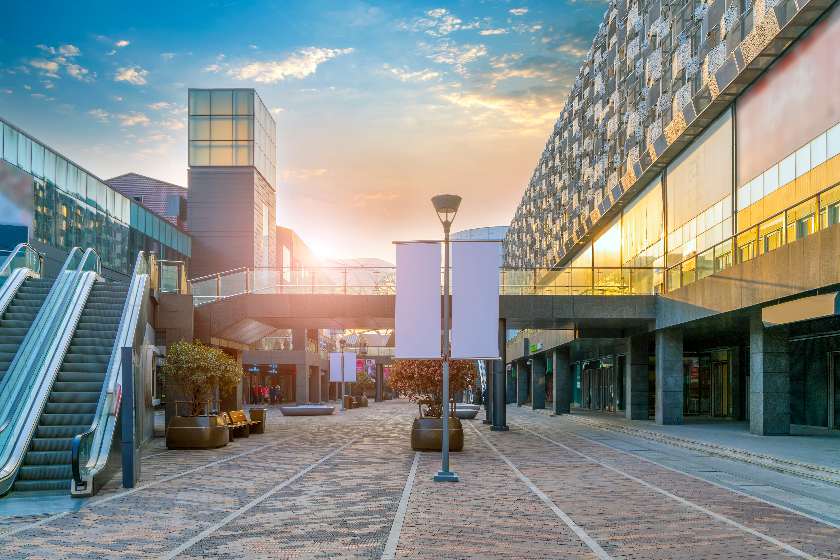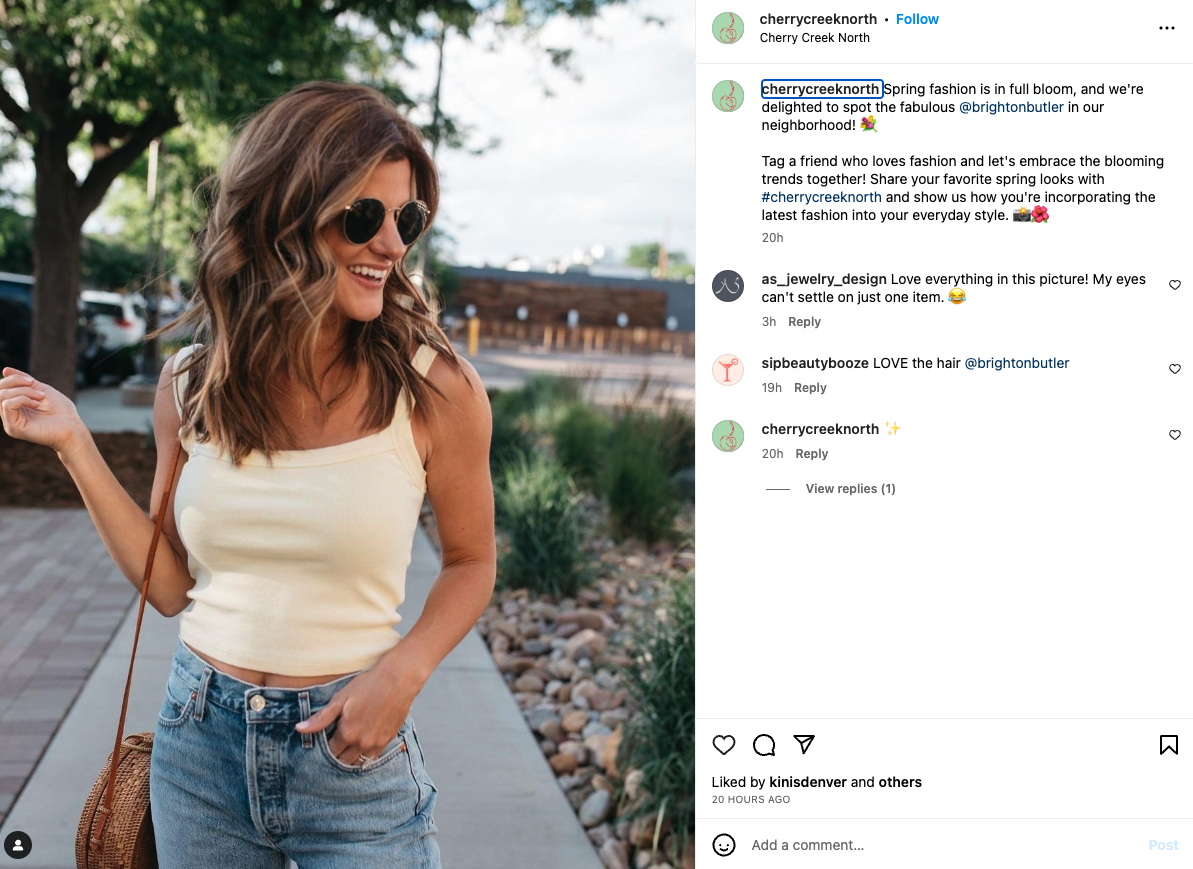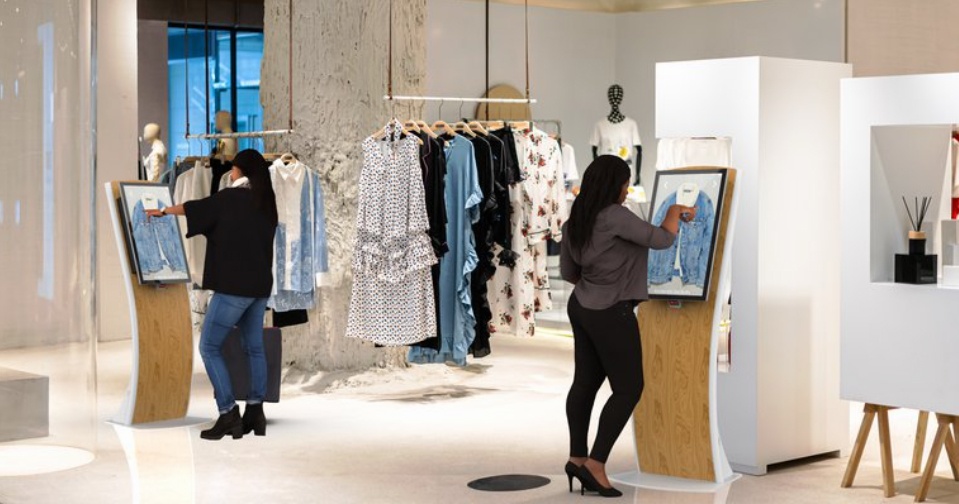Foot traffic refers to how many people walk past, around, or through your store. Measuring foot traffic helps you understand the pedestrian activity in your area, peak traffic periods, local demographics, and the efficacy of your store initiatives.
Studying foot traffic in an area before you open your store can help you choose the best location for your business and understand the population that is already in an area. If you already have a storefront, learning how to measure foot traffic can help you improve your store layout, inventory management, merchandising, and staffing levels.
How to Measure Foot Traffic
Historically, if you were determining how to measure foot traffic, you’d likely consider using a manual clicker or tallying numbers from video footage. However, now there are a number of free and low-cost tools businesses can use to gather general demographic data before opening a business, track pedestrian traffic outside your business, and count the number of customers walking through your front door. The method you choose will largely depend on what kind of traffic you are trying to measure—external or internal.
- For measuring external foot traffic, you will typically use demographic and data aggregators.
- For internal foot traffic, you can either use your point-of-sale (POS) system, artificial intelligence (AI) and facial recognition tools, or data-as-a-service (DaaS) solutions. Some businesses still use manual devices, such as a clicker counter, though this is becoming less common.
Demographics & Data Aggregators for Measuring External Foot Traffic
Below are a few demographics and data tools that give foot traffic counts and often much more.
Remember: You get what you pay for. Some free tools are a great place to start, but you can choose to invest in some eerily specific information on your target area, customer, and foot traffic.
- Community Development Corporations (nonprofit), and Economic Development Departments (government): Take advantage of your tax dollars by looking into location data at a Community Development Corporation or Economic Development Department in your town or city. Your location may have one or the other resource or both. Some high-tech offices even have property, demographic, and foot traffic data published on their websites for commercial districts. All of these services are free.
- Placer.ai (free): This free tool gives foot traffic counts and other limited data for any existing business, venue, shopping mall, or casino. More advanced reports can be purchased.
- AreaVibes (free): This beautifully designed site doesn’t give foot traffic counts, but it does provide other valuable geographic lifestyle and demographic data for free, including insights into community population, amenities, and walkability.
- LOIS (free): Using the free “Property Search” tool, you cannot only access available commercial properties but download reports outlining everything from foot traffic in the immediate area to category spending within a multi-mile radius.
- Gravy Analytics (pricing not listed, contact for a consultation): Gravy Analytics and some of its competitors use DaaS, which lifts the curtain on staggeringly detailed data points on foot traffic patterns, consumer personas, behaviors and purchases, and visitation frequency.
DaaS, AI & POS Integrations for Measuring In-store Foot Traffic
Below are a few systems small businesses can use to measure and analyze the shoppers in their retail locations. This list is only the tip of the iceberg of solutions that might best suit your needs as a business owner. These featured options highlight three-foot traffic measurement tactics: DaaS, AI, and POS.
Understanding your business from an analytical, data-driven perspective can be a powerful mechanism for growing your business. You can learn more with our guide to retail analytics.
How to Use Foot Traffic Data: Foot Traffic Analysis
Once you have aggregated some data about your foot traffic, what’s next? How can you use your foot traffic data to improve your business operations and make smarter decisions?
In addition to using this data to increase store visits, which we cover in its own section just below, strong analysis of foot traffic data can help you decide where to locate your new store, how to organize your store to spur sales, and even what hours to operate.
Let’s take a deeper look at ways you can use foot traffic data:
Choosing a store location is—unsurprisingly—a numbers game, and understanding a location’s foot traffic in relation to its rent price should be a huge factor in choosing the best location for your store.
Consider this example:
Location A: A scenic and bustling intersection; nearby amenities draw people out, and the businesses all benefit from each other’s foot traffic. Rent is high, but foot traffic numbers are optimal, at about 8,000 pedestrians per day (PPD). | Location B: A short walk off the main strip; surrounded by offices, not retailers. Rent is much more reasonable, but foot traffic is not as high at around 2,000 PPD. |
 |  |
How much more money is “worth” spending on Location A vs Location B?
To find the answer, we’ll estimate how many actual sales will result from the busier location. After all, if an investment (like higher rent for Location A) doesn’t ultimately result in sales, it isn’t money well spent. Let’s try the following formula to project potential sales:
1. Estimate your percentage of sales derived from walk-ins (vs customers who commute to the business). For the sake of our fictional gift shop, let’s say 90% of customers will be from foot traffic. For a specialty destination service business like a guitar repair business, this will be much lower—potentially as little as 10%. | Out of 100% of customers:
|
2. Now, consider the difference in foot traffic between the two locations. In this example, Location A has about 4x more visitors via foot traffic than Location B. | Location A foot traffic: 8,000 PPD Location B foot traffic: 2,000 PPD A ÷ B = X 8,000 / 2,000 = 4x |
3. Next, multiply the percentage you came up with in Step 1 by the number in Step 2. The resulting number is an estimate of how much sales will increase due to higher foot traffic. | 90% x 4= 360% Location A means as much as 360% (or 3.6x) more in sales than Location B
|
For the gift shop, the result is a whopping 360% more in sales for Location A. In this scenario, it’s worth paying 3x more in rent for the better location.
Learn more about leasing a retail space with our article, How to Find & Lease a Retail Space.
A key part of starting a business is identifying your target market. Using foot traffic data, you can determine where your target market is located and, by extension, where your store will be most successful.
Your target market is the category of people that you identify as the most likely customers for a product or store. Your target market is broken down by shared characteristics such as age, income, and lifestyle, and is the group to whom you aim your marketing and cater your brand.
A robust online tool for building out your customer identity is the Experian Segmentation Portal, which business owners can access for free. Also, check out our article on how to create a customer profile, which covers all the bases on the process of creating a customer identity and provides a template.
Foot traffic data can tell you a lot about the success of your products and whether they appeal to customers. By looking at how many people enter your store versus how many people make a purchase, you can determine your conversion rate and get a better picture of your product line’s overall success.
For example, say you introduce a new product line to your store, and suddenly, a much higher percentage of people make purchases before leaving. This would tell you that your new products appeal to your customers, and you should continue to keep them in stock.
Conversely, say you see the opposite effect—when you introduce your new product line, fewer people that enter your store are making purchases. This would tell you that the new products are unsuccessful and you should not reorder them.
Foot traffic data can tell you a lot about the success of your store layout—if you were to make a change to your store layout and then see an increase or decrease in the number of customers making purchases, this lets you understand whether your layout is working to inspire sales.
Additionally, you can look at how long people are staying in your store. If shopping times increase with a new layout, this indicates its success; meanwhile, if shopping times decrease, this would indicate you should reevaluate.
For example, a children’s toy store sells its products online. Board games and puzzles sell at a similar rate and are in the same product category. It opened its first brick-and-mortar shop in Oregon and noticed a significant difference in sales between the two. The store sold a lot more board games than puzzles. Further investigation revealed that the visual merchandising techniques were different. Board games were placed prominently with a display near lots of foot traffic, while puzzles were simply stacked on a table where few people walked by.
Armed with this information, it changed the store layout and made design decisions to increase puzzle sales and get them on par with board games.
Foot traffic data will help you identify peak shopping times and when the most (and least) customers are in your store. This will help you make better staffing decisions—adding more staff to the floor at peak hours and fewer during slow times.
For example, a mattress store on the West Coast is open every day from 10 a.m. to 8 p.m. to compete with big-box mattress retailers. Each day, it follows the square footage staffing formula of 2.5 employees per 1,000 square feet of retail space, so it always has about five team members on the floor. Traffic patterns determined that Sundays mean almost no sales, except around 1 p.m. or 2 p.m. It changes its Sunday hours to noon to 6 p.m., saving on overhead, utility, and payroll costs at a rate of nearly $500 every Sunday.
Foot traffic data can also help identify when it is time to expand your business or open a new location. First, traffic figures will help you see when your store is overstretched and there are more customers than your space can accommodate. Additionally, it will help you nail down exactly who your target market is so you can search for that specific market sector when looking for a new location.
For example, a successful bookstore/coffee shop in Ohio enjoys a college-town atmosphere and an onslaught of 20,000 students every fall. While the small, cozy storefront lends itself to exclusivity and high demand, traffic count and flow patterns show that the shop doesn’t have adequate seating relative to the foot traffic.
Eventually, it accommodates a packed house at its local destination hot spot by expanding to the back of the building and up two stories. This also opens space for late-night Poetry Slams and Open Mic nights, which expands its hours, extends visit longevity, and consistently brings in customers over 12 hours each day.
How to Use Foot Traffic Data to Increase Store Visits
In addition to everything we covered above, another key way that you can use foot traffic data is to increase store visits. With foot traffic data telling you when people are shopping and who those shoppers are, it’s easy to use effective retail marketing strategies that will drive visits to your store.
Invest in Your Curb Appeal
If your foot traffic data shows that there are a lot of passersby or pedestrians outside your business, but they are not translating to in-store traffic, consider how you can better capture their attention and interest.
- Signage: The key to effective signage is that it is eye-catching, legible, visible, and in line with your brand image. Consider adding or redesigning a store sign to help attract passersby. Good signage is especially important if your store is tucked off the main pedestrian route, and you should consider the best placement for maximum visibility.
- Window displays: Window displays play a major role in enticing passersby into your store. Make your windows exciting and feature new or popular products that will attract attention. You should also ensure that you update your displays consistently and keep them up to date with the seasons and holidays.
- Sidewalk displays: Another type of signage you can use is a sidewalk sign, typically a folded sign that you can decorate and update with fun messages, current promotions, or artful displays. Adding signage to the pedestrian level is a great way to bring those customers through your door!
- Samples: One of the most engaging ways to bring foot traffic into your store is by offering samples just inside or outside of your store.
- Greeters: While not as common as they once were, greeters are store associates that stand at the entry of your store, offering assistance with opening doors and a warm greeting upon entry. Greeters will often catch the eyes of shoppers and help entice them to come inside.
Engage on Social Media
Another way that you can engage and drive local foot traffic is by bolstering your social media. Word-of-mouth is one of the best ways to get local traffic through your doors, and building your follower list is a great way to boost brand awareness.
- Interact and partner with local influencers: Local influencers will have local followings, so by working with them, your brand will get in front of that market. Look for influencers that have a brand that is in line with yours and have a follower base that is akin to your target market for maximum success.

Partner with influencers to bring your audience to them and theirs to you. (Source: Cherry Creek North)
- Use local hashtags: Hashtags are a great way for people to discover you, and to find local traffic you should be using local tags. Consider adding your city’s name to your tags, local landmarks and events, and even specific neighborhoods or streets.
- Post consistently: If you want the algorithm to push your page in front of new audiences, you have to post consistently. Posting several times a week is a great way to keep your brand top of mind, as well, and will keep your posts at the top of your users’ feeds.
- Use your page for updates: Branding is a great way to use your social media pages, but you should also post updates about new products, promotions, and other exciting news. If users see this information, they are more likely to make a visit to your store to pursue your new offerings.
- Host giveaways: Giveaways are not just a great way to increase followers, you can also tie entries to store visits to increase your foot traffic and drum up hype.
Looking to boost your brand’s social media presence? Try these resources:
- How to Make a Social Media Plan in 5 Steps
- Guide to Social Media Marketing for Small Businesses
- How to Sell on Instagram in 2023
- How to Sell on TikTok
Prioritize Convenience
If data shows that there is not a lot of foot traffic in your area, or the foot traffic you have is during a commuter rush, consider prioritizing convenience and making it easy for people to shop your store on-the-go.
- QR code signage: Add QR codes to your window so passersby can easily visit product pages and shop items that catch their eye in your window display, even if they don’t have time to stop in.
- Online ordering: Add click-and-collect ordering services to your store menu, so busy shoppers can do their browsing online and pick up when they are rushing by.
- Self-checkout or mobile POS: Ensure that shoppers won’t have to wait in long lines or talk with cashiers by offering self-service checkout kiosks. You can also adopt mobile POS hardware to check people out on the sales floor as soon as they finish shopping.

Self-service kiosks give shoppers the option to do their own checkout whenever they are ready.
How to Determine Foot Traffic Frequently Asked Questions (FAQs)
Click through the questions below to get answers to some of your most asked questions.
Foot traffic refers to how many people walk past, around, or through your store. Typically, there are two types of foot traffic that you can measure—external foot traffic and in-store foot traffic. The data from these can help you understand the pedestrian activity in your area, including peak traffic periods, local demographics, the efficacy of your store initiatives, and more.
You can measure foot traffic using demographic and data aggregators, DaaS, AI technology, and foot traffic counting software.
You can use foot traffic data to understand the population of an area, which can help you choose a location that serves your target market. Foot traffic data can also help you test the effectiveness of your product choices and layout. It can also indicate when it is time to expand your business.
Foot traffic improves sales because as more people walk past your store, the likelihood of more customers increases. This, in turn, means a greater likelihood of more purchases.
Bottom Line
As covered above, measuring foot traffic can help you evaluate the demand, access, and visibility of a business location. This information is pivotal in choosing the location of your storefront and then testing out new products and ideas. The key here is to use the insights gained by your foot traffic data so that you can make smart decisions that will help you to serve your customers and provide them with the best experience every single time they pass through your doors.